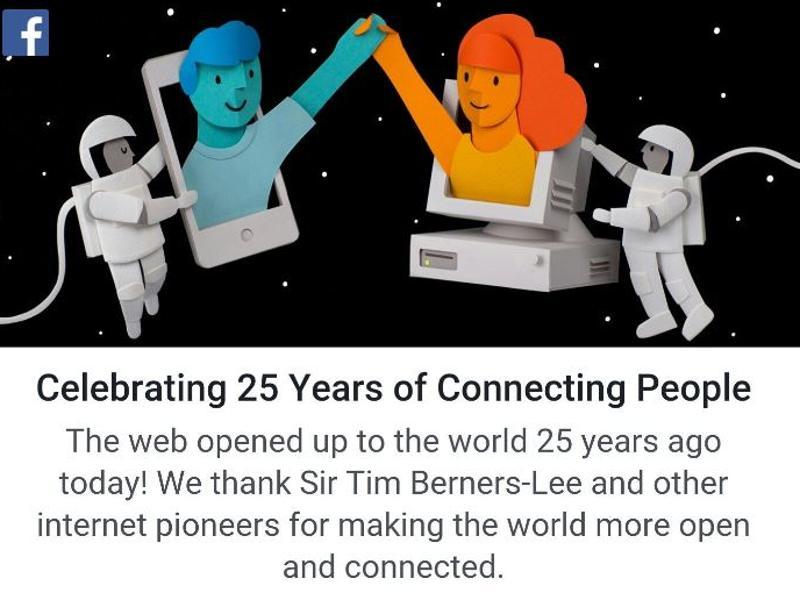Facebook celebrates ‘Internaut’ day with 25th anniversary message
In March 1989, CERN scientist Tim Berners-Lee wrote a proposal to develop a distributed information system for the Laboratory. By December 1990, the world’s first website and server were ready to go live at CERN. At that time, the World Wide Web enabled scientists to share information across the world; the source code was later released into the public domain in April 1993.

Did you see a message card from Facebook today morning asking you to participate in celebrating the 25th anniversary of the Internet? Well, the Mark Zuckerberg-founded company might have baffled you as Tuesday is not the actual anniversary of the internet.
Why is Facebook saying so? That is because research organisation CERN, where father of the World Wide Web Tim Berners-Lee worked while he had developed world wide web, marks 23 August as the day of the invention of the World Wide Web.
An "internaut" refers to a person who possesses a thorough knowledge about how to use the Internet and its history. But what is the history of the web? In March 1989, CERN scientist Tim Berners-Lee wrote a proposal to develop a distributed information system for the Laboratory. By December 1990, the world's first website and server were ready to go live at CERN. At that time, the World Wide Web enabled scientists to share information across the world; the source code was later released into the public domain in April 1993.
If seen otherwise, Tuesday is not the 25th anniversary of the internet or the world wide web. More so as the message card refers to the first time that Tim Berners Lee, a researcher at the European Organisation for Nuclear Research (CERN), had tested the first website via the world wide web paltform. But this was in 1990 which would mean that it is more than 25 years old.
Also, the date is in question. The most closest date for the anniversary could be March 21 because it was on this day the first high-speed T1 (1.5 Mbit/s) link between the NSFNET and Europe was installed between Cornell University and CERN, allowing much more robust communications than were capable with satellites. Six months later Tim Berners-Lee would begin writing WorldWideWeb, the first web browser after two years of lobbying CERN management.
By Christmas 1990, Berners-Lee had built all the tools necessary for a working Web: the HyperText Transfer Protocol (HTTP) 0.9, the HyperText Markup Language (HTML), the first Web browser (which was also a HTML editor and could access Usenet newsgroups and FTP files), the first HTTP server software (later known as CERN httpd), the first web server (http://info.cern.ch), and the first Web pages that described the project itself. Public commercial use of the Internet began in mid-1989 with the connection of MCI Mail and Compuserve's email capabilities to the 500,000 users of the Internet.
Also even if the main commercial use began from 1993, then also 2016 would mean 23 years and not 25. Responses as to why Facebook considered today as the 25th anniversary is still awaited.
The origins of the Internet date back to research commissioned by the United States federal government in the 1960s to build robust, fault-tolerant communication via computer networks. The primary precursor network, the ARPANET, initially served as a backbone for interconnection of regional academic and military networks in the 1980s.
The funding of the National Science Foundation Network as a new backbone in the 1980s, as well as private funding for other commercial extensions, led to worldwide participation in the development of new networking technologies, and the merger of many networks.
The linking of commercial networks and enterprises by the early 1990s marks the beginning of the transition to the modern Internet, and generated a sustained exponential growth as generations of institutional, personal, and mobile computers were connected to the network.
Catch all the Latest Tech News, Mobile News, Laptop News, Gaming news, Wearables News , How To News, also keep up with us on Whatsapp channel,Twitter, Facebook, Google News, and Instagram. For our latest videos, subscribe to our YouTube channel.































